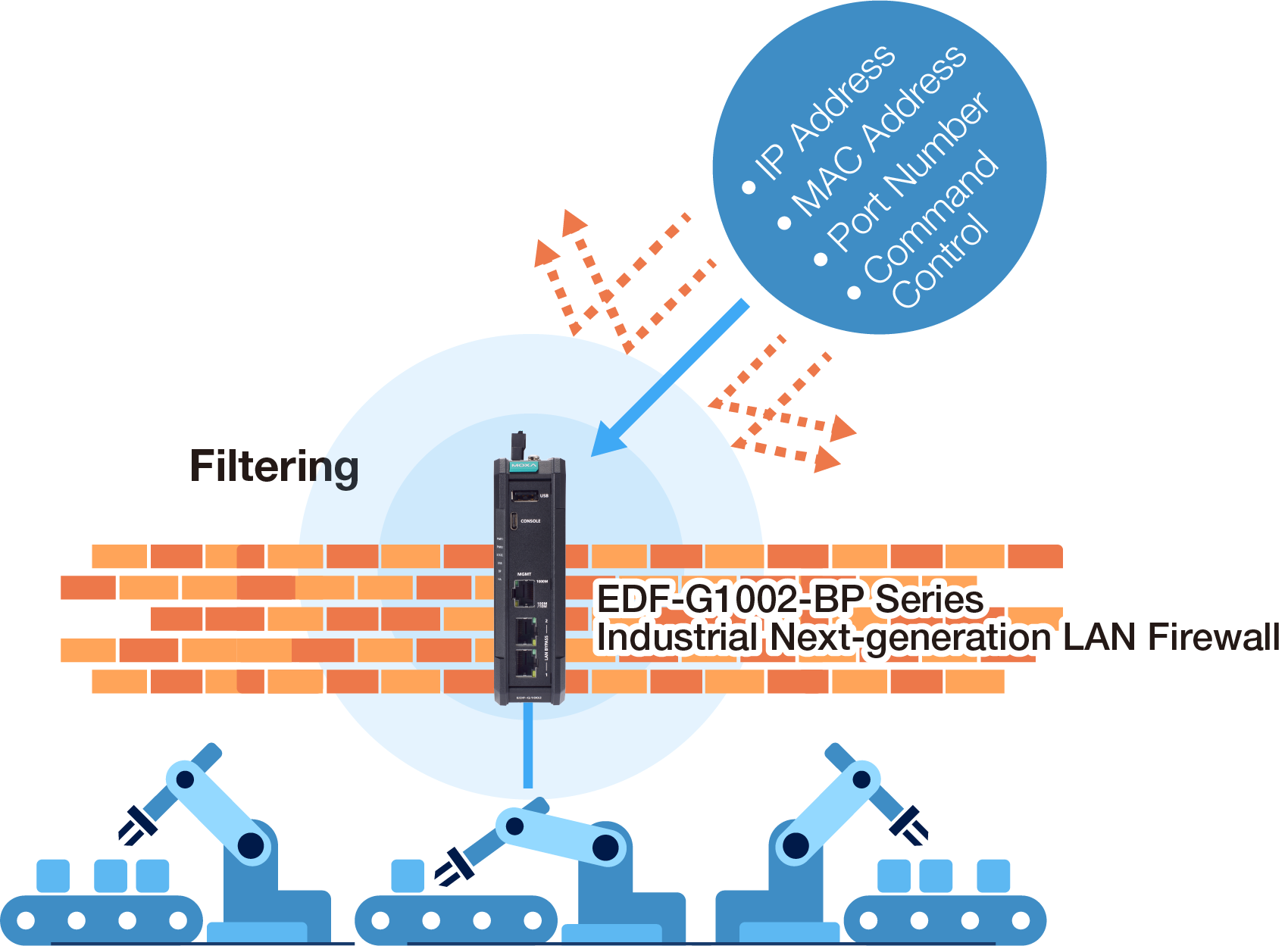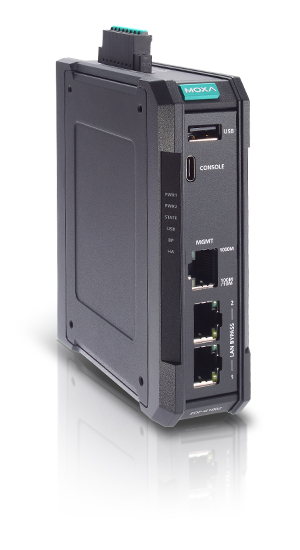MOXA Next-Generation LAN Firewalls: Enhancing Industrial Security and Reliability

Next-Generation LAN Firewalls: Enhancing Industrial Security and Reliability
In response to this growing threat, governments worldwide are enacting stricter cybersecurity laws and standards to protect critical infrastructure. For instance, the EU’s NIS2 Directive mandates that member states incorporate enhanced cybersecurity measures into their national frameworks by October 2024. To meet these evolving requirements, industrial organizations must adopt comprehensive security frameworks and robust technologies designed to ensure compliance and protect their operations.
Defense-in-Depth: The Cornerstone of Industrial Cybersecurity
For example, an infected USB drive connected to an internal device can quickly
spread malware, compromising the entire network. Addressing such risks
requires solutions that protect both the network perimeter and its internal
components. Firewalls are essential tools for achieving this goal, providing
advanced traffic filtering to defend against threats.
Nevertheless, deploying firewalls in LANs to protect critical assets is not
without challenges. Industrial operators often worry about the potential
impact on network performance and existing configurations.
This article examines the key concerns faced by industrial
stakeholders—including asset owners, system integrators, OT administrators,
and cybersecurity professionals—when deploying firewalls. It also highlights
how advanced LAN firewalls address these challenges to enhance network
protection and ensure operational continuity.
4 Key Concerns in Deploying Firewall Solutions
Implementing firewalls can significantly improve cybersecurity, but the process can introduce operational challenges. Achieving both robust security and smooth performance is a delicate balance. Below are four primary concerns that industrial operators encounter when integrating firewalls into their networks.
Concern 1: Impact on Network Architecture
Integrating firewalls into existing networks often requires substantial reconfiguration of network topology and IP subnets. These changes can be time-consuming and labor-intensive for engineers and are particularly problematic for critical applications where downtime is not an option. Firewalls that can be deployed without altering existing network designs are, therefore, highly desirable.
Concern 2: Network Performance and Reliability Risks
The addition of new devices, such as firewalls, raises concerns about their impact on network performance. Factors such as boot times, latency, and environmental compatibility are critical to seamless operations. Moreover, the potential for increased downtime due to device malfunctions or maintenance can be a significant risk. Industrial firewalls must be designed to optimize network performance while mitigating these risks.
Concern 3: Securing Legacy Devices
Legacy devices, which are common in industrial settings, often operate on outdated systems that cannot be easily upgraded or replaced. These devices require protection against modern cyberthreats, as mandated by standards like IEC 62443 and NIS2. Additionally, many legacy devices use diverse communication protocols, adding complexity to network security. Firewalls must support these protocols while providing advanced traffic inspection and protection features.
Concern 4: Complexity of Monitoring and Management
Continuous monitoring is essential for identifying and responding to cyberthreats, but it can be resource-intensive for administrators. Without effective tools, delays in detecting security breaches or network errors can lead to extended downtimes and compromised operations. Firewalls that simplify monitoring and provide real-time alerts are crucial for effective network management.
Unlocking Security and Performance With Advanced LAN Firewalls
Next-generation LAN firewalls, such as the EDF-G1002-BP Series, address these challenges head-on. Designed to enhance both network security and uptime, these firewalls integrate seamlessly into existing infrastructures while providing robust protection for critical assets.

Protect Legacy Devices
Our LAN firewall supports industrial-grade IPS that allows virtual patching, while DPI filters traffic to ensure the integrity of industrial protocol data.

Maximize Network Uptime
The EDF-G1002-BP Series has a fast 30-second boot time, software-configurable LAN Bypass, and a wide operating temperature to maximize network uptime.

Simplify Network and Security Management
Easily manage LAN firewall devices with MXview One, while MXsecurity helps administrators quickly identify and respond to cyberthreats.

Simplified Monitoring and Management
The EDF-G1002-BP Series integrates seamlessly with MXview One and MXsecurity software for streamlined network management. MXview One provides a comprehensive view of network status and sends timely alerts for network errors, while MXsecurity simplifies the configuration and monitoring of firewall policies. These tools enable centralized management, reducing the risk of manual errors and allowing for rapid responses to security events.
Achieve Cybersecurity Excellence With Next-Gen Firewalls
The EDF-G1002-BP Series combines advanced security features with exceptional reliability, empowering industrial operators to overcome common challenges and meet evolving cybersecurity standards. With effortless integration, robust legacy device protection, and simplified management tools, these firewalls ensure uninterrupted operations and enhanced network security.

EDF-G1002-BP Series
Industrial Next-gen LAN Firewalls
OT-centric Cybersecurity
- Industrial-grade Intrusion Prevention/Detection System (IPS/IDS)
- Examine industrial protocol data with Deep Packet Inspection (DPI)
Industrial Reliability
- 30-second boot time for fast firewall activation
- Gen3 LAN Bypass for system fault tolerance
- -40 to 75°C operating temperature range (-T model)
Simplified Management
- MXview One is software for real-time monitoring of firewall devices
- MXsecurity software for easily monitoring and identifying cyber threats








